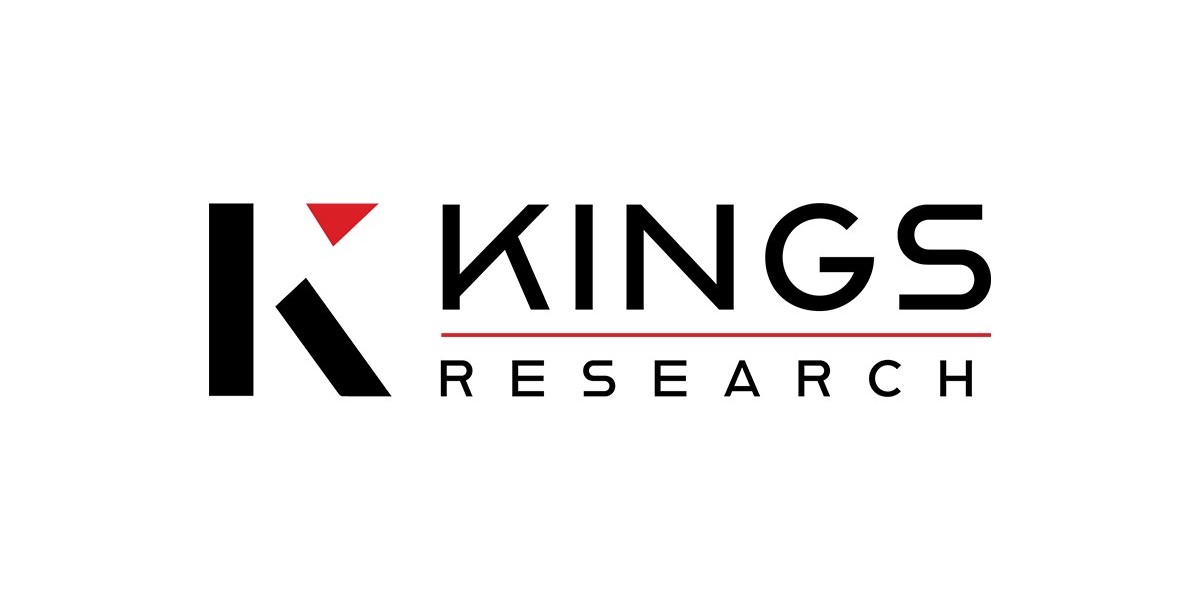Developing a Blinkit-Like App can be a transformative opportunity in the world of on-demand delivery. With the rise of ultra-fast grocery delivery services, businesses are eager to create efficient, scalable apps that can replicate the success of Blinkit, Zepto, or Swiggy Instamart. Understanding the Blinkit-like app development cost is essential for startups, tech companies, and entrepreneurs aiming to break into the 10-minute grocery delivery app market.
Understanding Blinkit and the 10-Minute Delivery Model
Blinkit, formerly known as Grofers, disrupted the Indian grocery delivery space by introducing the 10-minute grocery delivery model. The app combines smart warehousing, hyperlocal delivery networks, and powerful backend technology to achieve lightning-fast order fulfillment. A Blinkit-like app must mimic these performance standards while offering a seamless user experience and operational scalability.
How Does Blinkit Work?
At its core, Blinkit operates through a network of micro-warehouses or “dark stores.” These are strategically located to reduce delivery times. When users place an order on the Blinkit app, algorithms route the request to the nearest store with optimized pickers and delivery personnel, ensuring products reach customers in under ten minutes.
To build a delivery app like Blinkit, developers must replicate this ecosystem by integrating real-time location tracking, inventory management, route optimization, and payment solutions within a sleek and responsive interface.
Get Your Blinkit-Like App Estimate Now!
Key Cost Components of Blinkit-Like App Development
When planning for Blinkit-like app development, understanding the various cost components helps allocate budgets effectively. Here's what goes into the total estimate.
App Platform and Development Type
Choosing between Android, iOS, or cross-platform development significantly impacts the overall price. A delivery app development project for a single platform typically costs less than a dual-platform project. However, cross-platform development using frameworks like Flutter or React Native can offer cost efficiency and faster time-to-market.
A native app build ensures top performance but can double the cost if developed separately for each platform.
User Panels and Backend Infrastructure
A grocery delivery app like Blinkit includes multiple panels:
- User app for customers to browse and order groceries
- Admin dashboard to manage inventory, pricing, and operations
- Delivery partner app to track deliveries and update statuses
- Store panel for warehouse management and product availability
Each panel adds complexity and hence affects the app development cost. The backend infrastructure must handle real-time updates, analytics, and order routing, requiring robust API design and cloud hosting.
Design and User Interface (UI/UX)
In a fast grocery delivery app, design plays a crucial role in customer retention. A clean, intuitive user interface influences how easily customers can navigate products, schedule deliveries, and make payments. UI/UX design costs vary depending on the number of screens and animations included in the app making process.
Core and Advanced Features
A Blinkit-like app needs both essential and advanced features to stay competitive. The more sophisticated the functionality, the higher the price tag.
Essential Features
- User registration and login
- Product browsing and search
- Smart cart and checkout flow
- Payment integration (UPI, cards, wallets)
- Real-time delivery tracking
- Notifications and promotions
- Ratings and reviews
Advanced Features
- AI-based product recommendations
- Predictive analytics for order management
- Multi-address and voice search
- Route optimization for speedy deliveries
- Smart inventory management using AI
- Loyalty programs and subscription models
Incorporating AI app features can increase the Blinkit-like app development cost but also elevates the customer experience and operational efficiency.
Detailed Cost Breakdown of Blinkit-Like App
The total cost to create a delivery app similar to Blinkit typically ranges between $40,000 and $250,000, depending on specifications.
Estimated Development Costs
- Basic grocery delivery app: $40,000 – $60,000
- Mid-level app (Blinkit-inspired with real-time order tracking): $70,000 – $120,000
- Advanced 10-minute grocery delivery app: $150,000 – $250,000
These figures cover development, design, testing, and deployment but exclude long-term maintenance.
Factors Affecting the Overall App Build Cost
Several variables determine the actual app development budget. Here are some major factors that influence pricing:
Development Team Location
Developers from regions like India or Eastern Europe typically charge less (around $25–$60/hour) compared to those in the US or Western Europe ($80–$200/hour). Outsourcing to a reputed app company in Asia can reduce costs without compromising quality.
Technology Stack
Choosing the right technology stack ensures speed and scalability. Common choices include:
- Frontend: Flutter, React Native, Swift, Kotlin
- Backend: Node.js, Python (Django), Ruby on Rails
- Database: PostgreSQL, Firebase
- Cloud: AWS, Google Cloud, or Azure
App Maintenance and Updates
Once live, you must allocate 15–20% of the initial app development cost annually for maintenance, updates, and bug fixes. Continuous improvement helps ensure smooth app work and user retention.
Core Features to Include in a Blinkit-Like App
Customer Panel
The user-facing panel should prioritize simplicity and performance. Key inclusions are order browsing, voice search, personalized offers, and seamless checkout.
Store/Inventory Panel
Warehouse managers use this panel to manage product stock, pricing, and fulfillment timing. Integrating an AI app component can predict demand and suggest restocking cycles.
Delivery Partner Panel
Delivery staff should have easy navigation, optimized route display, and instant payment updates. A 10-minute delivery app must ensure location accuracy down to a few meters.
Admin Dashboard
The central control panel enables monitoring of analytics, orders, and user behavior, allowing the admin to tweak campaigns and track performance metrics across delivery zones.
Development Phases of Building a Blinkit-Like App
The journey to build a delivery app involves several stages:
Ideation and Market Research
Before writing code, define your business model. Study local markets, pricing strategies, and competitors. Decide if your grocery delivery app will focus on 10-minute deliveries or scheduled orders.
UI/UX Wireframing
The app making process starts with mapping user journeys and designing visual components that offer intuitive navigation. This step ensures that the app work aligns with customer expectations.
Prototype and MVP Creation
Start with a Minimum Viable Product (MVP) that captures core functionalities such as browsing, ordering, and delivery tracking. An MVP helps test market fit and gather user feedback before full-scale development.
Full App Development
After refining the MVP, developers build your app into a fully functional, robust product. Backend systems are connected, APIs are integrated, and testing begins to maintain quality standards.
Testing and Quality Assurance
Testing ensures the app build performs consistently under different conditions. QA covers usability, security, and speed performance, crucial for a 10-minute grocery delivery experience.
Deployment and Maintenance
Once tested, the product is launched on app stores. Regular updates are necessary to maintain app stability, security, and new feature additions.
How AI Enhances Fast Grocery Delivery Apps
The integration of artificial intelligence has revolutionized the way shopping delivery apps like Blinkit operate.
AI helps streamline inventory management, predict customer preferences, and optimize delivery routes. For example, AI-based route planning ensures that every fast grocery delivery reaches customers in the shortest possible time. Moreover, machine learning models can analyze user habits, enabling a grocery app to recommend products and offer personalized discounts.
Using AI in the app development company phase reduces human error and enhances service accuracy, especially in high-demand cities where minutes make the difference.
Choosing the Right App Development Partner
Selecting the correct app company is as important as your technical vision. Look for a partner who understands grocery delivery app development, scalability requirements, and local compliance issues.
Evaluate potential developers based on:
- Experience in delivery app development
- Technical expertise in database and cloud integration
- Portfolio of food delivery app or shopping delivery apps
- Transparent pricing and agile development model
Partnering with a skilled vendor ensures you can build your own app that is reliable, customizable, and future-ready.
Timeframe Required to Build a Blinkit-Like App
Building a Blinkit-like app can take anywhere from 4 to 9 months, depending on complexity, feature set, and development approach. A simplified MVP might take 3–4 months, while a full-fledged 10-minute grocery delivery app could take closer to 8–9 months with advanced functionalities like AI integration and real-time tracking.
Projects where teams make a delivery app from scratch often require longer timelines than those using pre-built frameworks or APIs.
Monetization Models for Blinkit-Like Apps
To maximize profitability, consider these revenue models commonly adopted by grocery ordering apps and delivery apps:
- Commission Model: Deduct a percentage from each transaction processed through the app.
- Subscription Model: Introduce premium memberships for free delivery or special discounts.
- Advertisements: Allow brands to pay for in-app promotion slots.
- Delivery Charges: Add nominal fees for fast delivery or longer-distance orders.
Combining multiple strategies can create a sustainable profit model for your Blinkit-like app development project.
Estimated Total Cost Summary
Scope | Estimated Cost (USD) | Timeline |
Basic grocery delivery app | $40,000 – $60,000 | 3–5 months |
Mid-level Blinkit-style app | $70,000 – $120,000 | 5–7 months |
Advanced AI-integrated app | $150,000 – $250,000 | 8–9 months |
This breakdown provides an approximate overview for founders planning to create an app with Blinkit-style functionalities. Actual expenses vary depending on development team rates, chosen technology stack, and ongoing operational costs.
Conclusion
Building a Blinkit-like app can be a rewarding venture in the booming grocery delivery app company development space. While the Blinkit-like app development cost may range between $40,000 and $250,000, the returns from user engagement, scalability, and operational efficiency can far outweigh the investment.
The key to success lies in selecting the right app company, emphasizing UI/UX, and utilizing AI-powered automation for performance optimization. Whether you’re looking to build your app from scratch or enhance an existing platform, understanding these cost dynamics prepares you for sustainable growth in the evolving delivery app development landscape.
Frequently Asked Questions (FAQs)
How much does Blinkit-like app development cost?
Ans. The Blinkit-like app development cost typically ranges from $40,000 to $250,000 based on features, design, and complexity. Integrating AI, real-time tracking, and analytics can push costs toward the higher end.
How long does it take to build a grocery delivery app like Blinkit?
Ans. A basic grocery delivery app takes about 3–5 months, while an advanced 10-minute grocery delivery app can take up to 9 months, depending on development scale.
What features are essential in a Blinkit-like delivery app?
Ans. Core features include product catalog browsing, intelligent search, secure payments, order tracking, and admin control panels. For better performance, integrating AI and route optimization will give your delivery app an edge.







